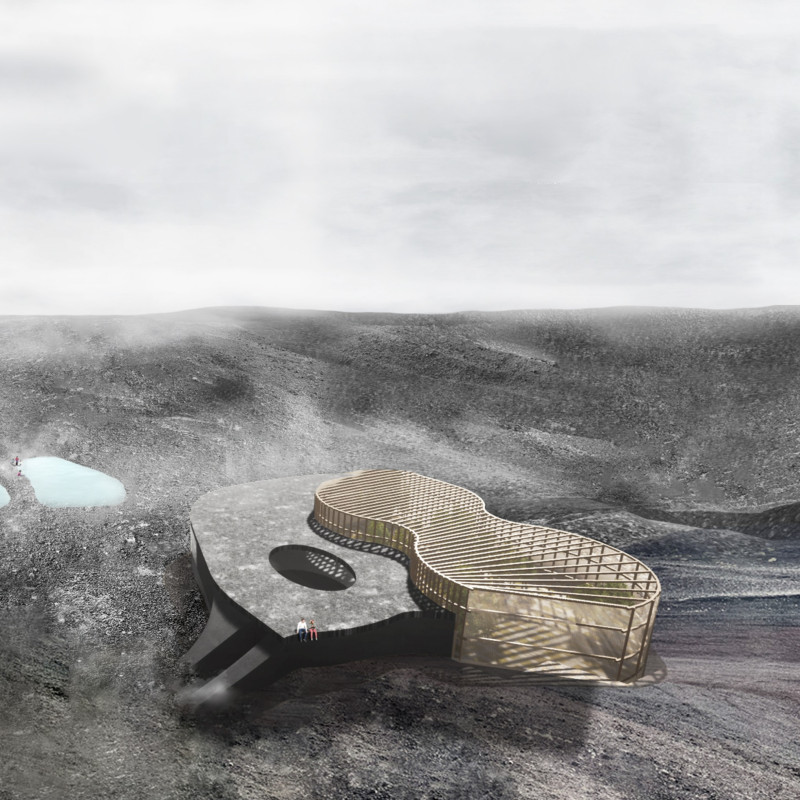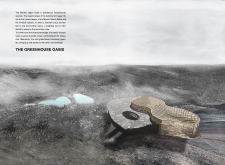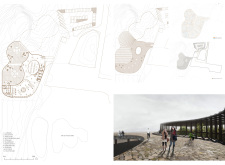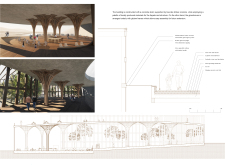5 key facts about this project
The design in the Myvatn region of Iceland highlights a thoughtful connection between the built environment and its natural surroundings. Drawing inspiration from the beauty of the Myvatn Nature Baths and the Hverfjall volcano, the overall concept blends the architecture with the landscape. The building features functional spaces for visitors, including a restaurant and a greenhouse that helps incorporate greenery into the stark environment.
Design Concept
At the heart of the design is a walkable roof that allows visitors to move across the structure and enjoy expansive views of the area. This feature enhances the experience of being in nature while connecting people to the landscape. Inside, gentle ramps navigate the sloped terrain and lead to the restaurant area. This layout fosters accessibility and promotes easy movement throughout the building, creating a comfortable environment for patrons.
Sustainability Features
The project prioritizes sustainability by utilizing geothermal heating. This system takes advantage of ground heat from the volcanic surroundings, providing efficient heating and hot water. The design also incorporates thermal mass in the concrete floor slab for passive warming, which helps reduce energy use. These systems demonstrate a commitment to responsible use of resources while maintaining comfort inside the building.
Material Selection
Materials play an important role in the overall design. The structure consists of a concrete shell supported by tree-like timber columns, contributing to the natural appearance while ensuring stability. Icelandic stone wool is used as insulation, making use of local materials and enhancing the building’s performance.
Water Management
Water resource management is another key aspect of the design. The building employs strategies for reusing wastewater, which helps conserve water. Drip irrigation for plants reduces water usage overall. Greywater collected from kitchens and bathrooms is treated through ozone purification, reflecting a practical approach to ecological considerations.
The greenhouse adds an essential element to the design, bringing greenery into the building. This not only enhances the visual appeal but also reinforces a connection to the natural environment. The result is a space that thoughtfully engages with its surroundings while providing a functional experience for visitors.






















































